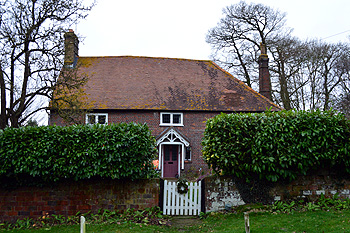The Manor of Eggington
Volume III of The Victoria County History for Bedfordshire was published in 1912 and details the short history of Eggington Manor. Eggington was originally part of ther Royal Manor of Leighton and probably remained so through the early Middle Ages.
The History states that the Manor of Eggington first appears in the historical record in 1518 when it was held by William Man. However, in 1963 a deposit of Eggington manor court rolls was made by Lovel Smeathman and Sons of Hemel Hempstead [Hertfordshire] which extended the history of the manor back as far as 1297 [X310/1/1-16]. The rolls allow us to give the following lords of the manor during the Middle Ages and 16th century:
- 1297-1312: Henry Child;
- 1313-1348: John Child;
- 1367: John Child, son of John Child;
- 1370: John Child and Margery, his wife;
- 1377: William Styn and Margery, his wife;
- 1413: Joan Child;
- 1425: William Child
- 1433-1435: Christiana, formerly wife of Roger Man;
- 1500-1529: William Man;
- 1560-1572: John Man.
By 1710 Eggington Manor was in the hands of John Gardener and by 1722 it was held by Susannah Calfe and her family still had the manor in 1741. It was later held by Sarah Huxley but by 1787 the Lord of the Manor was John Bond. In 1790 he alienated the manor to Thomas Goodwin whose family still held it at the beginning of the 19th century after which time the manor is no longer mentioned.
It is likely that the manor house from the 15th century onwards was today's Manor Farm, which is, at core, a 15th century building. The building seems to be an encroachment on the village green. Eggington was likely set out as a model village during the Middle Ages with a straight street extending up to today's Eggington House. Everything south of the road was village green and Manor Farm would then have been south of this road, which was moved to accommodate it.

Manor Farmhouse January 2013